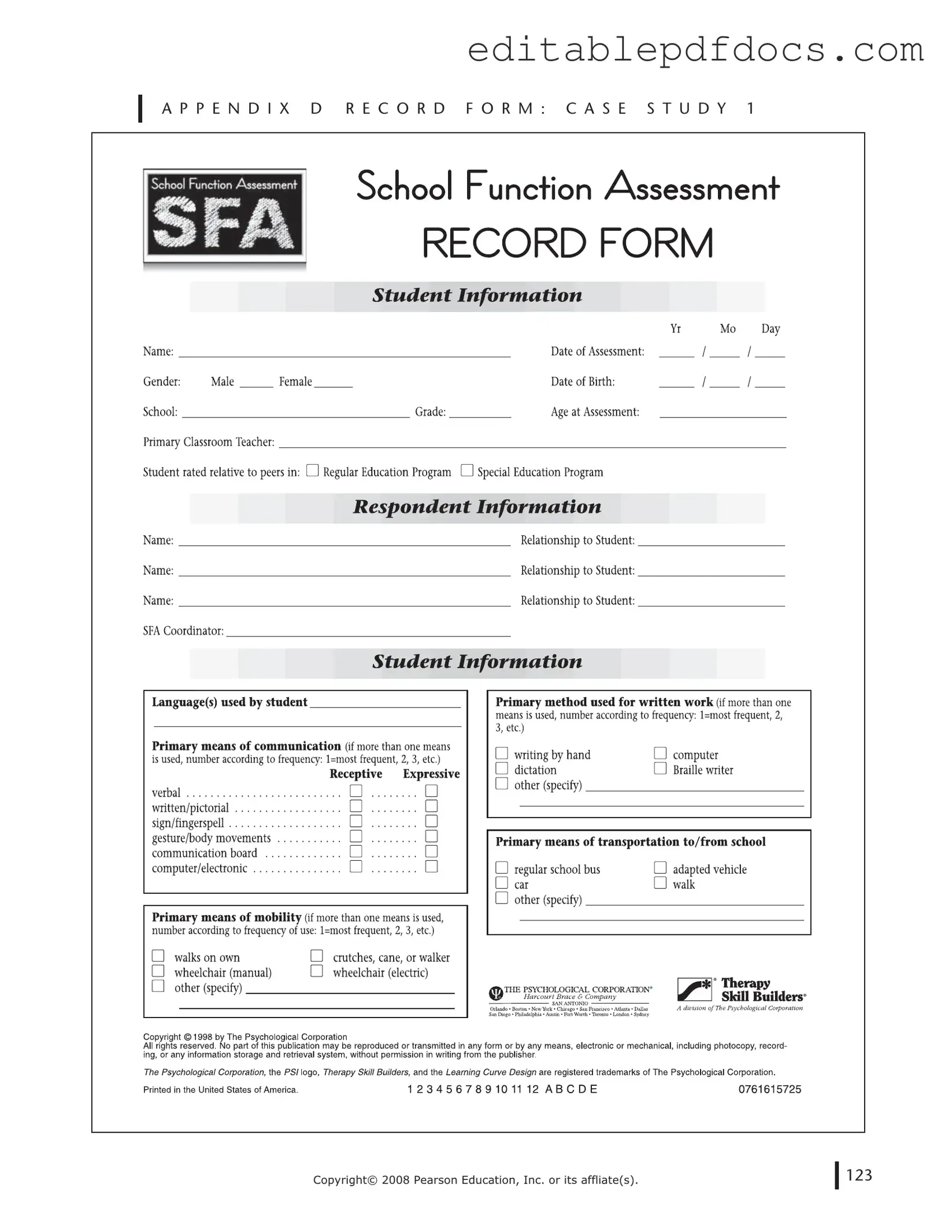Fill a Valid School Function Assessment Template
The School Function Assessment form is a valuable tool designed to evaluate a student's performance in various school-related activities. This assessment helps educators and parents identify the areas where a child may need support, ensuring that every student has the opportunity to thrive in their educational environment. Don't wait—click the button below to fill out the form and take an important step toward supporting your child's success.
Open Editor Now
